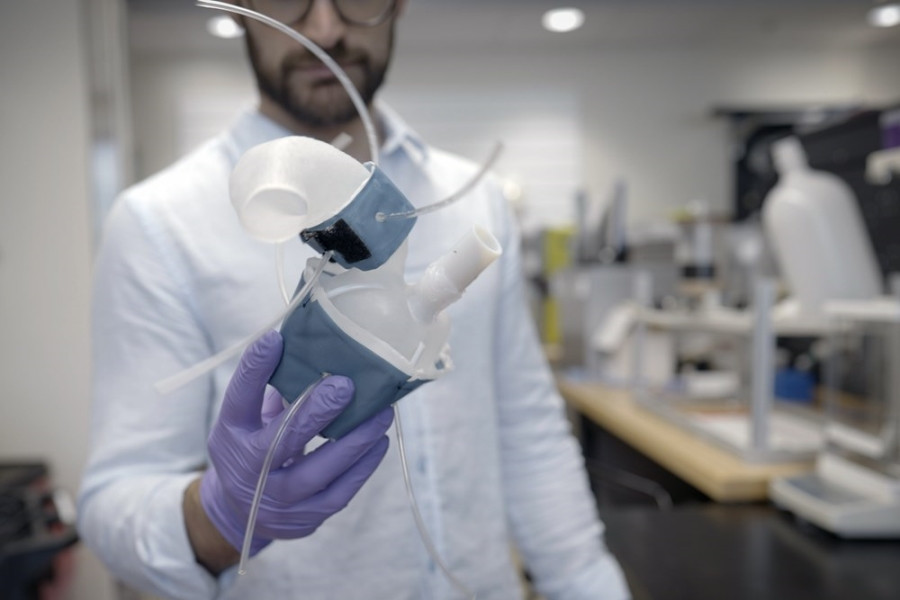Researchers believe that 3D bioprinting of hearts will in the future help doctors accurately identify the right heart implant for patients needing surgery or transplantation.

3D biological heart model. (Source: Massachusetts Institute of Technology)
Each person's heart is different, especially those with cardiovascular diseases. Therefore, this is one of the difficulties in the process of artificial heart transplantation.
However, a study recently published in the journal Science Robotics has brought hope that 3D bioprinted heart models will help surgeons perform surgeries and transplants more easily.
Researchers believe that 3D bioprinting of hearts will in the future help doctors accurately identify the right heart implant for patients needing surgery or transplantation.
Luca Rosalia, a researcher at the Massachusetts Institute of Technology-Harvard, said that each person's heart is different, especially a sick person's, but the 3D heart printing system not only recreates the shape but also the function of the heart.
For example, when the heart valve leading to the aorta, which carries blood from the heart to the rest of the body, becomes narrowed — a condition called aortic stenosis — a synthetic valve is often implanted to widen the natural valve.
With the new process, doctors could print a replica of a patient's heart and aorta, then try different valves on the printed model to find out which one works best, the researchers say.
In the study, scientists used heart scans of 15 patients with aortic stenosis to create three-dimensional models of cardiovascular anatomy for the first time.
The models were 3D printed using polymer-based inks. They then created an outer tube similar to a blood pressure cuff that wrapped around the heart and aorta, which was printed to mimic the pumping action of the heart and the narrowing of the aorta, which is indicative of aortic stenosis.
The researchers said the model accurately represented the patient's pumping pressure and blood flow previously measured in patients, and hope the 3D biomimetic heart model could pave the way for improved clinical care for millions of people worldwide with aortic stenosis and other cardiovascular conditions.
According to VNA